While he is a relative newcomer to the Warcraft mythos, the Warrior Hero Garrosh Hellscream used his short time in the spotlight to great effect, forever altering the relationship between the Horde and Alliance factions and becoming the driving force of at least two main storylines in the World of Warcraft universe.
Left Behind in Draenor
Son of the proud warchief grommash-hellscream, Garrosh fell victim to a strange, debilitating illness when young, and as such failed to accompany his father on his path of conquest.
He never witnessed his father’s submission to the Legion, how he was the first to willingly accept the taint of demon blood in order to gain the power to become a conqueror of worlds, and he was among the few to be left behind when the Horde marched on across the Dark Portal and into the otherworld of Azeroth.
But when he learned about what happened – of how his father had forever enslaved his race to the whims of the Legion – he became disgusted and disavowed his sire. Recovering from his illness, he grew up a healthy and strong warrior, but bitter and disillusioned.
Many years later, the Legion used the now shattered world of Draenor – since called “Outland” – as a staging ground for a new invasion of Azeroth.
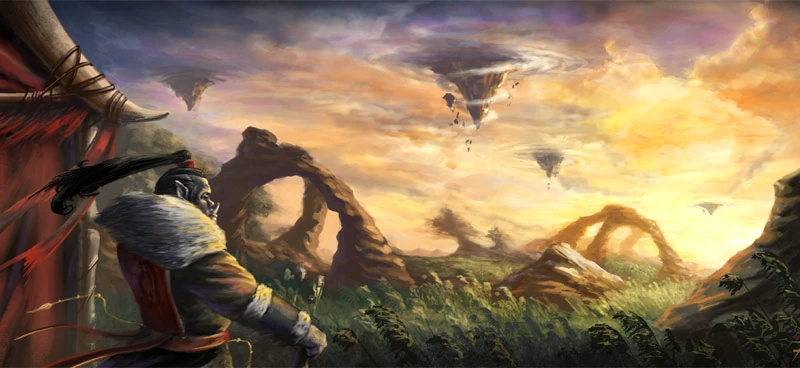
But this time, the armies of both the Horde and the Alliance, led by Thrall and bolvar-fordragon, were ready for them and pushed their counterattack through the Portal and into Outland itself, with the intent of disrupting their common enemy’s operations once and for all.
When Thrall got word of the existence of the Mag’har, a splinter of the Horde that had been left behind, untouched by demonic corruption, he went to meet them at once, and that is how he met Garrosh for the first time.
Identifying him as the son of his old friend and lieutenant, Thrall made it a point to show him that his father had redeemed himself, sacrificing his life to kill Mannoroth the Destructor, the annihilan Pit Lord responsible for the pact between the Legion and the Horde, and General of the Legion. By killing him, Grommash had broken the pact, liberating the orcs from the corrupting influence once and for all.
Knowing this gave new life to Garrosh. He stood proud of his father once more, and Thrall decided to take the orc warrior – that was more or less his age – as a traveling companion and later, advisor.
But with the return of his familial pride, so did Garrosh embrace in full the warmongering attitude that had characterized his clan, and his father’s lust for power.
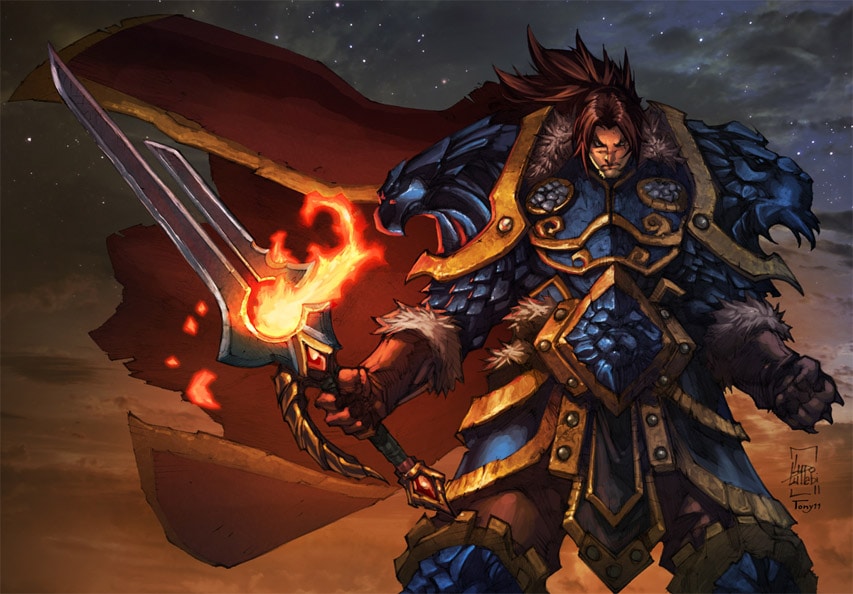
A Brief History of Warrior Roles and Mechanics
“Warrior” is kind of an ambiguous term, though not as ambiguous as the original Dungeons & Dragons’ “Fighter” class. It fact, it could be argued that the majority of Warcraft’s characters are warriors, in the sense that most of them fight or wage war.
And the Warrior class is a relatively new development in Warcraft lore itself. The early real-time strategy titles used “warrior” as an umbrella term for units that were essentially used for melee combat. Shamen were considered warriors, as was the famous demon hunter illidan-stormrage. It was not until the launch of World of Warcraft that Warrior became defined as a class in its own right.
And what a class. It is my personal opinion – and unbiased, as I never played a Warrior myself – that up until The Burning Crusade, the Warrior was the most essential class in the game.
Massively Multiplayer Online games at the time were – and still largely are – balanced on a “holy trinity” of roles: tank, healer, and damage-dealer.
Of classic World of Warcraft’s nine character classes – the same that are represented by Hearthstone’s Heroes – only three (technically four, but Horde did not have access to Paladins, and Alliance did not have access to Shamen) were suited for healing, making them intrinsically more valuable. But only one, the Warrior, was designed from the ground up for the tank role.
A tank is basically a character than can take huge amounts of punishment while diverting the enemy’s’ attention from the rest of his group, because most classes don’t have the fortitude and defensive skills to withstand attack from most high-level enemies.
And while some pioneering Paladins and especially Druids managed to fight their class’s limitations and successfully tank high level content, neither class had the vast amount of tanking tools that were intrinsic to the Warrior class.
The world of Warcraft Warrior, then, was established as a tough fighter, able to work in a perfectly fine way as an offensive character, but shinning uniquely as a defensive unit, and that seems to be the component that most inspired Hearthstone’s designers when creating Hearthstone’s version of Garrosh.
Finally, it’s worth pointing out that Warriors – and Druids, wh
en shapeshifted to Bear form – were the original users of the “taunt” ability, a skill that forced an enemy to attack them, originating one of Hearthstone’s defining mechanics.

Garrosh’s Rise Among the Horde
The hot-headed and warmongering Garrosh grew increasingly frustrated with Thrall’s focus on diplomacy when dealing with the alliance, and wouldn’t hear his mentor’s pleas for him to keep a level head. Instead, he did everything in his power, as a high authority within the Horde, to escalate the conflict with the Night Elves over the natural resources of Ashenvale.
Eventually, as the threat of the Lich King’s armies drew near, Thrall’s cautious approach got Garrosh even more frustrated, to the point where he challenged his friend, mentor and warchief for a duel in Orgrimmar’s arena.
Ironically, the duel was disrupted by an attack by the Lich King’s forces, and after the invaders were repelled, Thrall was forced to admit that the situation would require the commitment of a big force, and decided to empower Garrosh to serve as his hand and lead his armies on the campaign against the Lich King, in the far north continent of Northrend.
Garrosh revealed himself to be a skilled leader, and despite taking every chance to hinder and even assault the Alliance forces in Northrend, his leadership proved instrumental to the ultimate defeat of the Lich King.
He returned from Northrend as a hero of the Horde, respected by all who had served under him – with the notable exception of his second-in-command, Horde veteran Overlord Saurfang, who decided to stay in Northrend managing the Horde’s fortress, claiming to be tired of the young commander – and was greeted as a hero upon his arrival at Orgrimmar, Thrall himself gifting him his father’s legendary axe, gorehowl.
The New Warchief of the Horde
In many ways, the events in Northrend were what convinced Thrall that Garrosh had what it took to lead the Horde in his absence. So, when the shaman decided to leave in order to join the Earthen Ring and help mend the damage left in the wake of deathwing’s cataclysm, he made Garrosh into the Warchief of the Horde, despite fierce opposition from his friends and counselors, notably the tauren chieftain cairne-bloodhoof and troll chief voljin.
Garrosh decided almost immediately that if the Horde was to survive in this world, it would have to be based off their strength and capability for battle. He proceeded to expel all “unworthy” races from central Orgrimmar, allowing only orcs and tauren to remain. This greatly strained relationships with the Blood Elves, Trolls and Forsaken.
Undeterred by his peers, he proceeded to act with increased hostility towards his neighbours, going as far as to push and conquer a large part of Ashenvale from the Night Elves, further escalating the hatred between the two races.
His actions even let to the demise of Thrall’s long-time friend, cairne-bloodhoof. Upon learning of the warchief’s hot-headedness and actions against the people of Ashenvale, Cairn challenged him to an honorable duel. But his enemies secretly poisoned Garrosh’s axe before the fight, and Garrosh, who for once did not wish to kill his opponent, ended up finding the tauren chieftain dead at his feet, following what he meant to be a non-lethal blow.
But one of the two events that would forever burn Garrosh’s name into the history of Azeroth, and one that has already been alluded to in this series, would only come after the end of the cataclysm.

Up until this point, Garrosh’s actions had always been guided by honor. Even as his hatred for the Alliance grew, he always shunned practices that would endanger innocents and civilians, instead being pitiless in his attacking of military targets, and severely punishing his underlings when they took the lives of noncombatants. But this all changed after the cataclysm ended.
Deciding to ensure the Horde’s dominion over eastern Kalimdor once and for all, Garrosh ordered the construction of a mana bomb, and set it loose upon the human capital of Theramore, Jaina Proudmoore’s domain.
The entire city, most of its people, and the notable archmage and leader of the Kirin-Tor rhonin were wiped out in what is probably the single greatest act of genocide than ever happened in the current Warcraft storyline.
Whatever tentative notion of peace that may have existed among the two factions was equally wiped out, as Jaina, until then the greatest advocate for a truce, swore herself an eternal enemy of the Horde.
But Garrosh was not done.
Upon arriving at the beautiful land of Pandaria, discovered after being hidden for thousands of years by a magic mist, Garrosh proceeded to order his forces to despoil the continent, and ultimately, in his lust for power, unhearted the ancient evil forces of the Sha.
The Sha were the remnants of the Old God Y’Shaarj, spiritual corruption made manifest through dark emotions. Having excavated the heart of Y’Shaarj, sealed for centuries underneath Pandaria, he then unleashed it upon the center of the continent, forever scarring the Pandaren’s sacred land, and in the process becoming both empowered and possessed by the Sha of Pride.
The destruction wrought by his actions was the final straw that triggered voljin into leading a rebellion, with Thrall’s support.
By the end of the Mists of Pandaria storyline, the combined forces of the Horde and Alliance, along with its players, laid siege to Orgrimmar, where Grommash had barricaded himself with his loyal followers.
Upon suffering defeat, Garrosh saw his title of Warchief being stripped away and given to voljin, and was only spared from being executed by Thrall due to varian-wrynn’s intervention. The human king argued that he should face trial in Pandaria, answering to those he wronged the most.
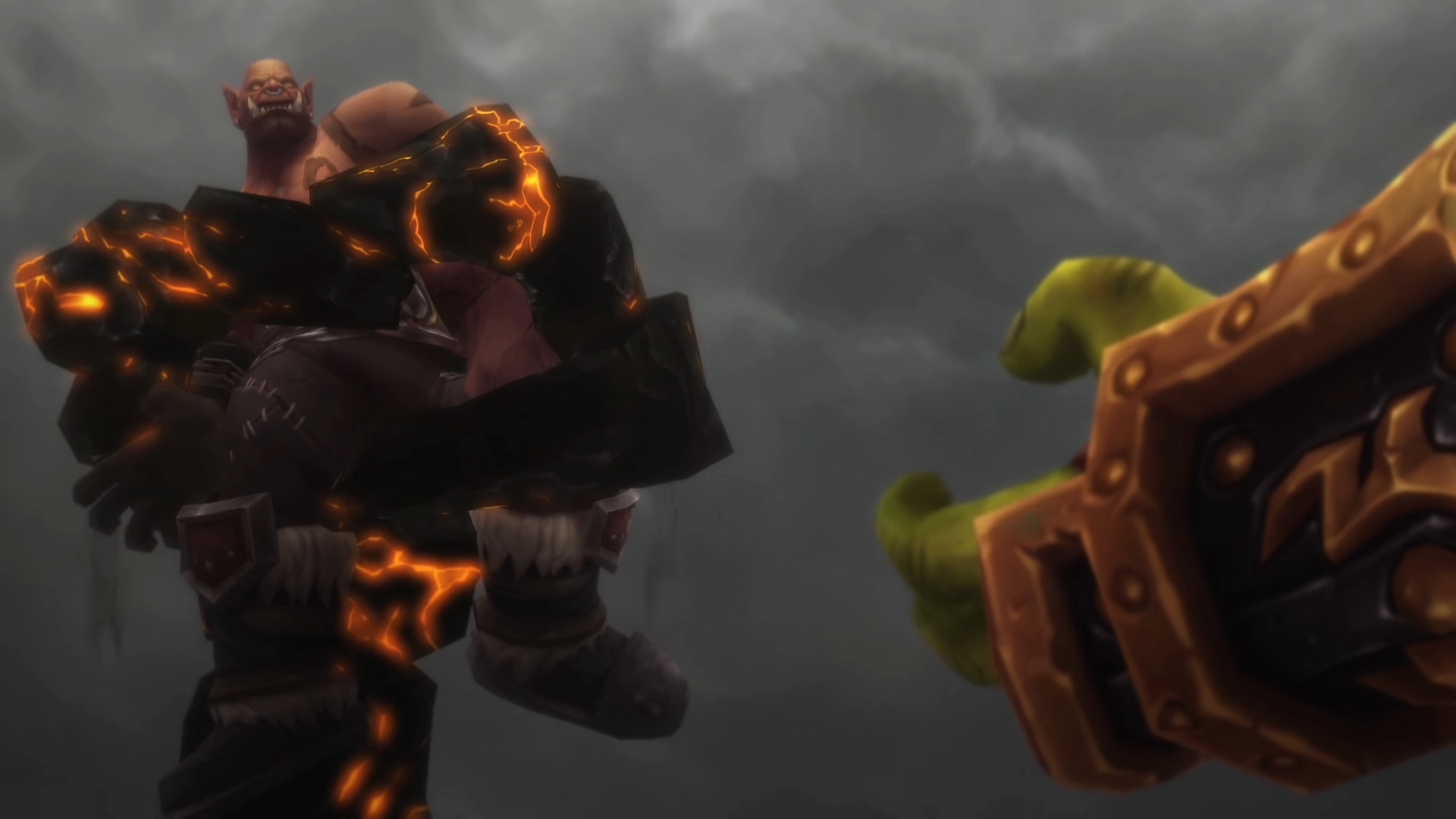
Garrosh’s End
Ever the survivor, Garrosh managed to escape through time and space to the Draenor of his forefathers, with the help of a rogue agent of the Bronze Dragonflight – an alliance that came to an abrupt end as soon as Garrosh recovered his bearings, strangling his saviour with his chains.
Garrosh then set out to manipulate history, using his knowledge of both the future and superior war machinery to convince his father grommash-hellscream into refusing Gul’dan’s dark bargain and denying the Legion’s possession of the Horde.
Instead, father and son worked to unify the various orc clans into a more industrialized, warmongering Iron Horde, and set out to invade the Azeroth of the future, from where Garrosh escaped from.
Once more, the combined forces of voljin’s Horde and varian-wrynn’s Alliance were able to push the invaders back and followed suit with a counter-invasion that led into the current World of Warcraft: Warlords of Draenor storyline.
Garrosh finally met his doom when, after nearly defeating the player’s character and his companions, he is interrupted by Thrall.
The former friends then decided to continue the duel they had started long ago, and, even as Garrosh seemed near the edge of victory, Thrall summoned the elements of the earth to bind the warrior Hero, and finished him off with a lightning bolt.
Garrosh’s last words were unapologetic. “You left me to pick the pieces.” He says to Thrall mid-fight. “You made me what I am.” he remarks, before dying from the final blow.
Grommash “Grom” Hellscream
As usual, the next article will discuss the Warrior’s several notable cards, but it’s worth taking a bit of time in this article, extensibly dedicated to Garrosh, to finish up matters with some choice words about his father, grommash-hellscream.
Much about him has already been said both in this article and in the article dedicated to Thrall, but it’s worth remembering that, besides being the one that ultimately accepted Gul’dan’s dark bargain on behalf of his entire race, and the one that broke that same bargain later on, Grom was also a fierce and honorable combatant.
He was the one to first find and mentor young Thrall right after his escape from captivity, and the pair soon became fast friends and war buddies. As Thrall accepted the mantle of Warchief, Grom stood beside him as his adviser and lieutenant. And after his slaying of the night elven demi-god cenarius and death after dealing the killing blow to the Pit Lord Mannoroth, he rightly became a legendary figure worshiped by the orcish people.
His past self, in the meantime, gained new importance with the time-travelling antics of the current World of Warcraft storyline, where he was first presented to the players as the main antagonist and driving force of the threatening Iron Horde.
He has ultimately been shown turning away from the warmongering path that he was put on first by Gul’dan, and then by his time-traveling son, and leading the orcs of past draenor into an unified existence of, hopefully, peace.
On the next article, I am going to discuss some of the Warrior’s most popular cards, as well as the alternate Warrior Hero, Magni Bronzebeard. Which one is your pick, Magni or Garrosh ?



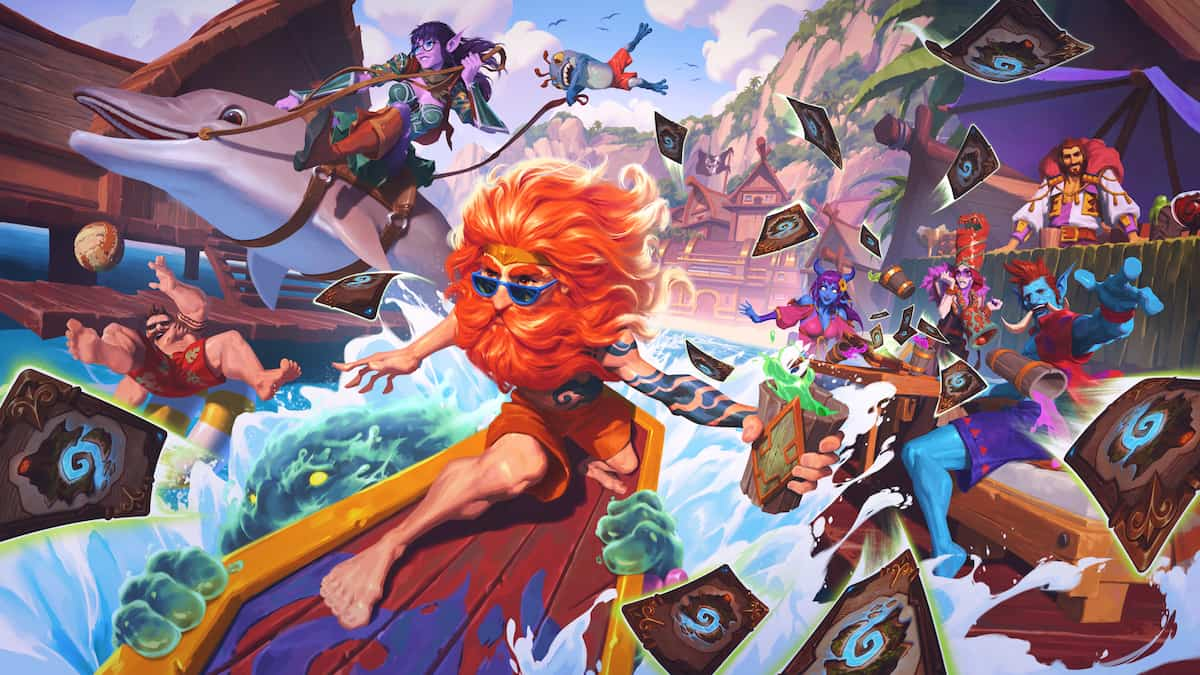
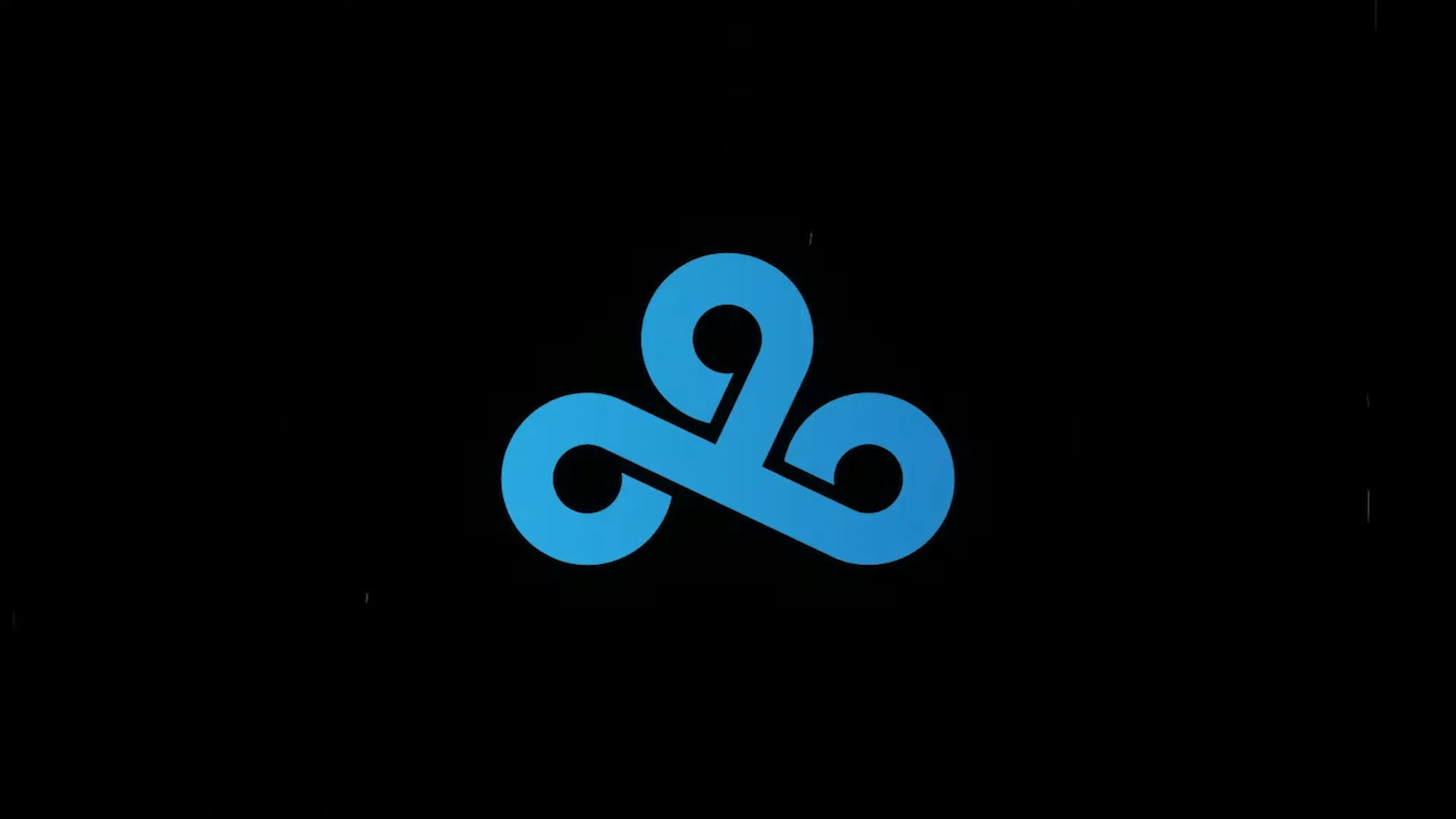
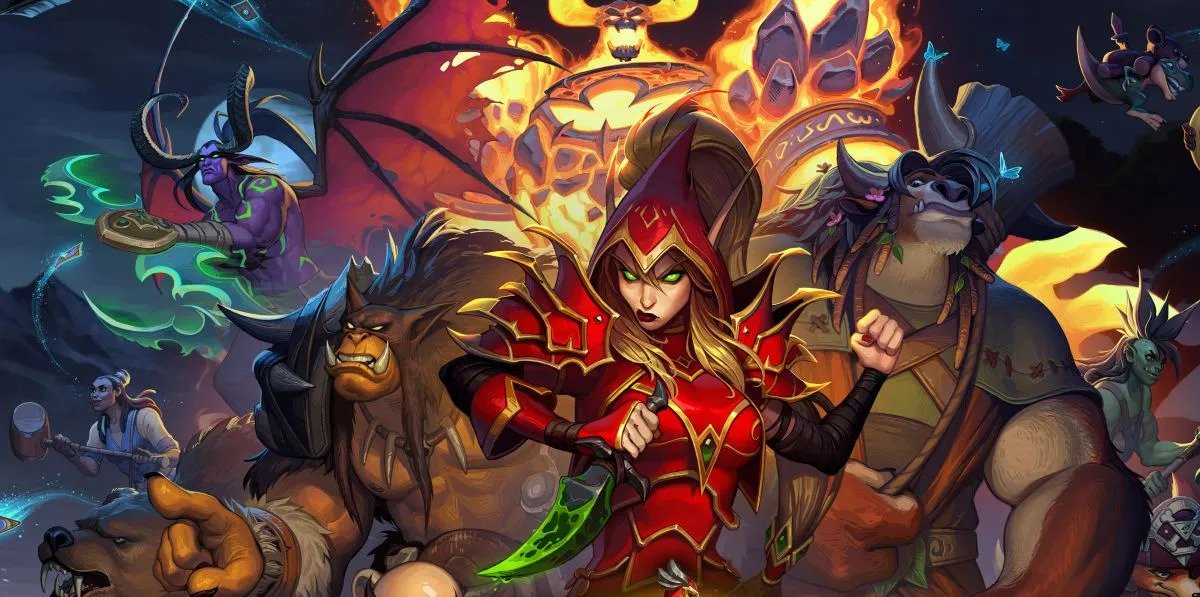
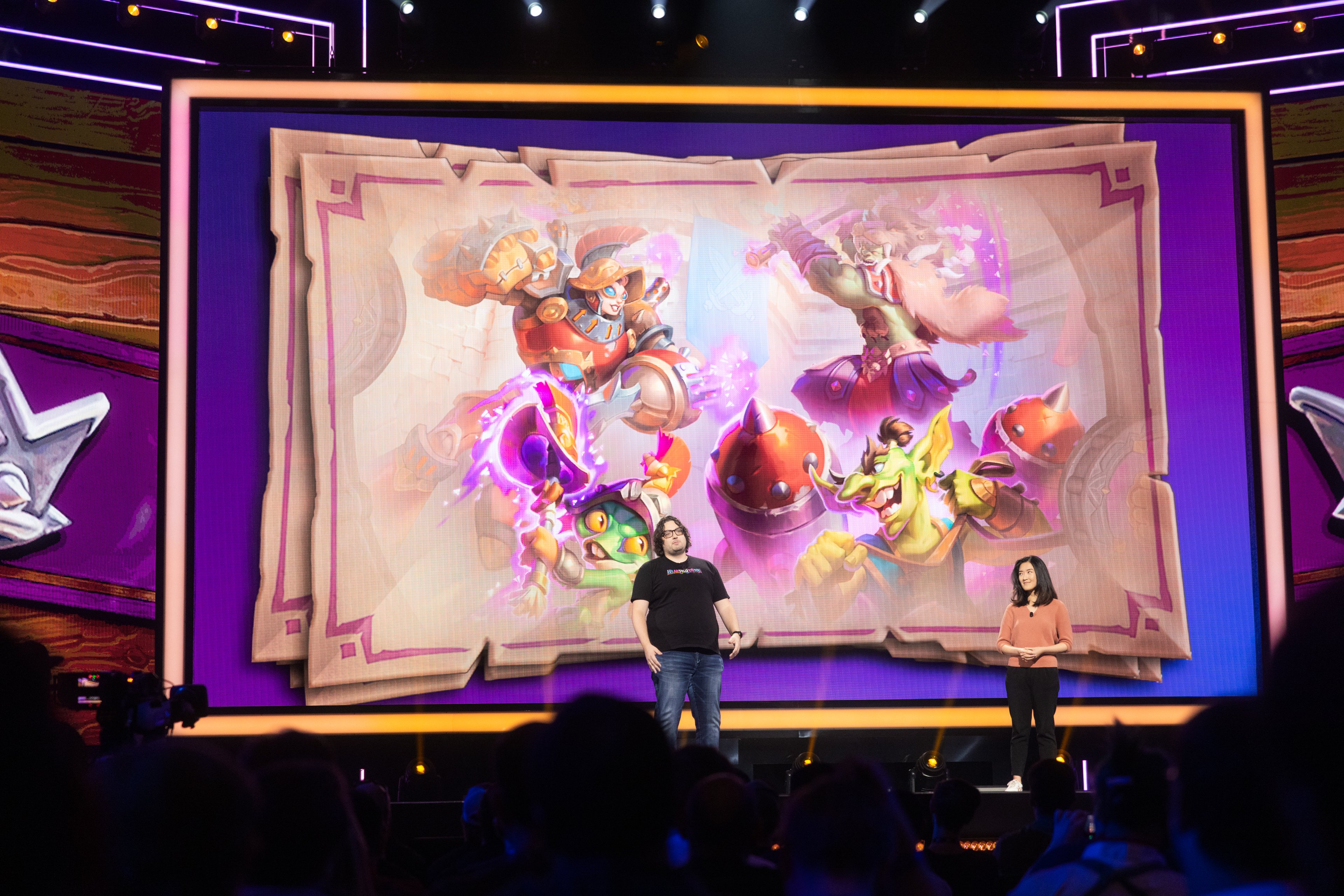
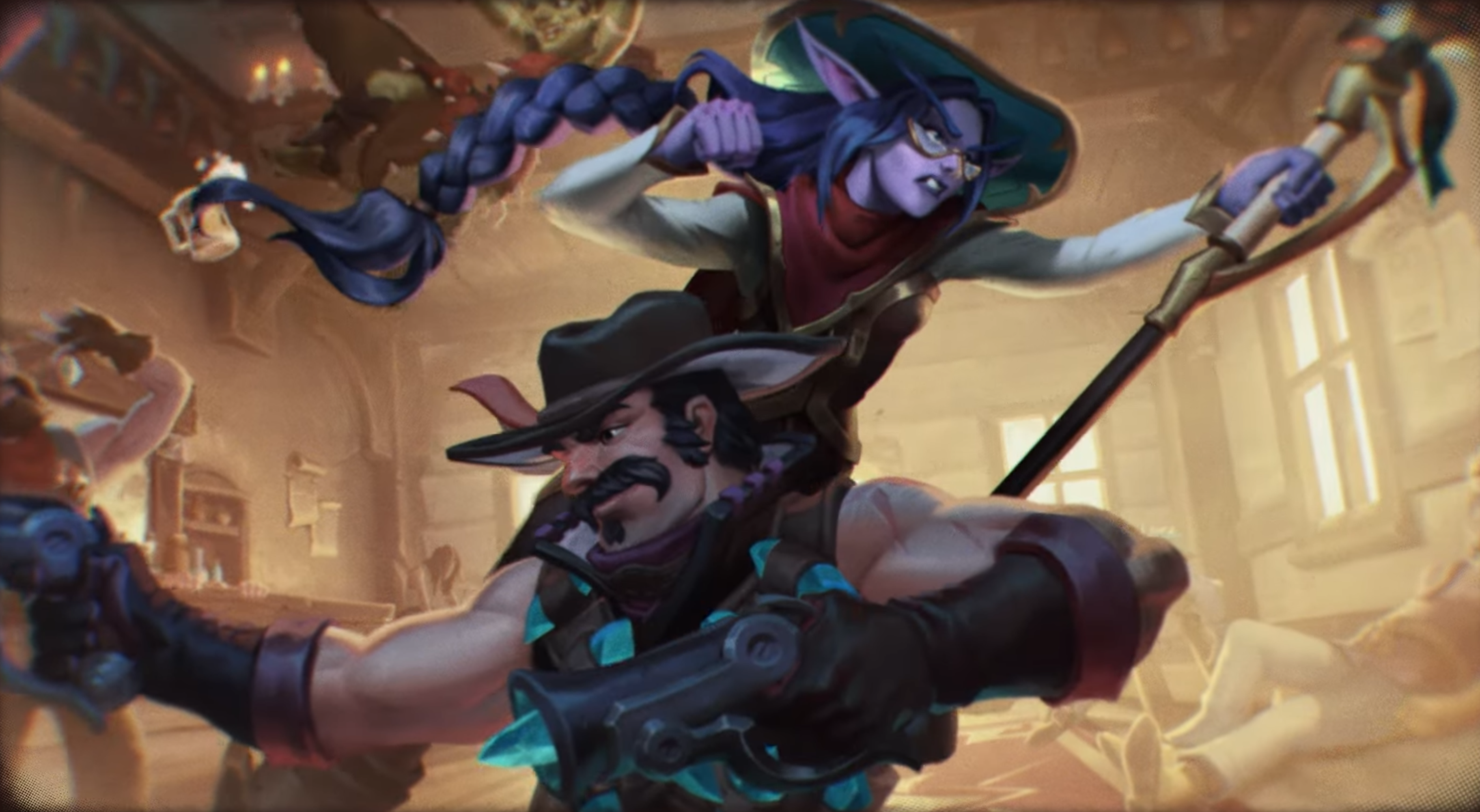
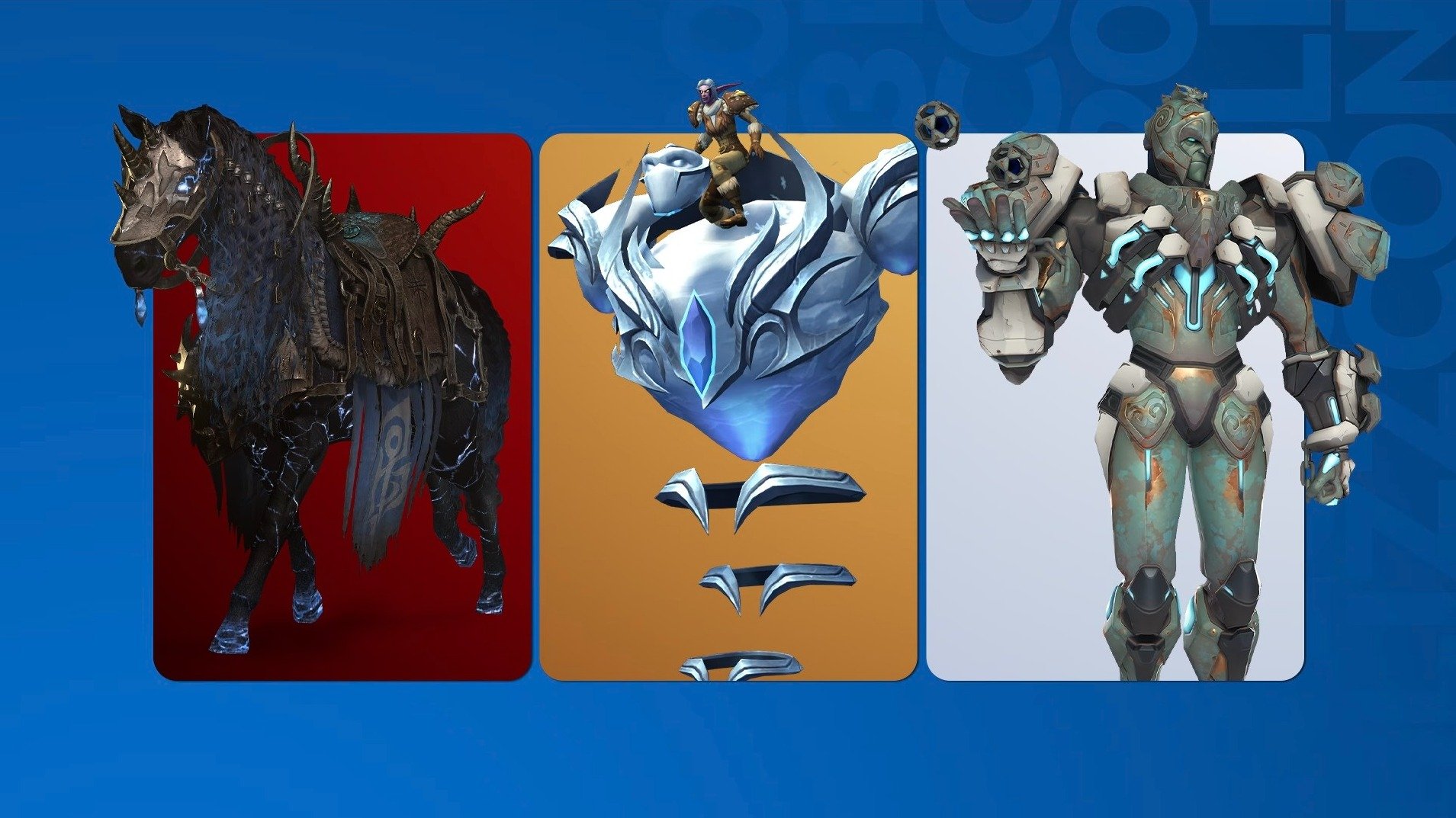
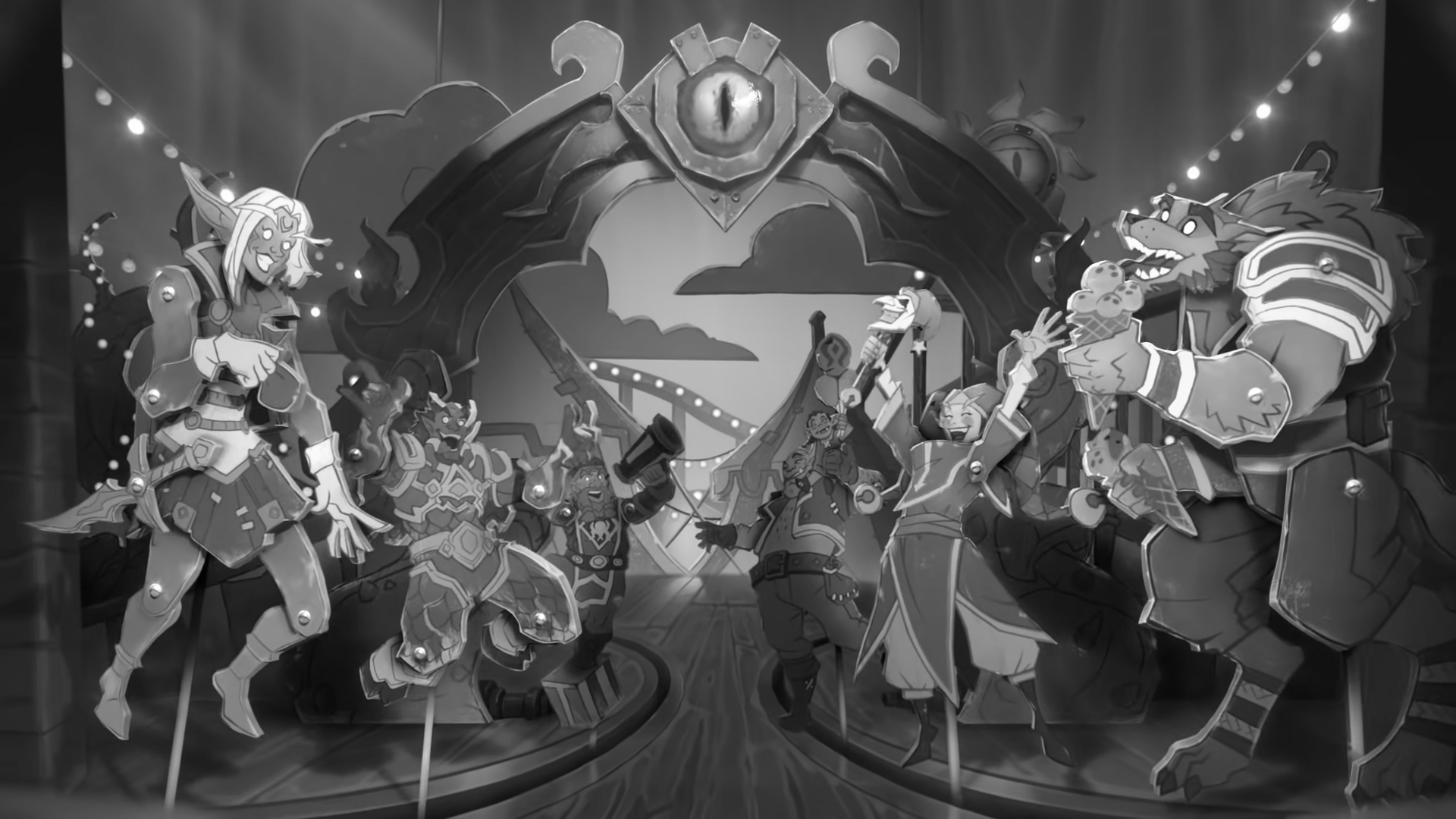
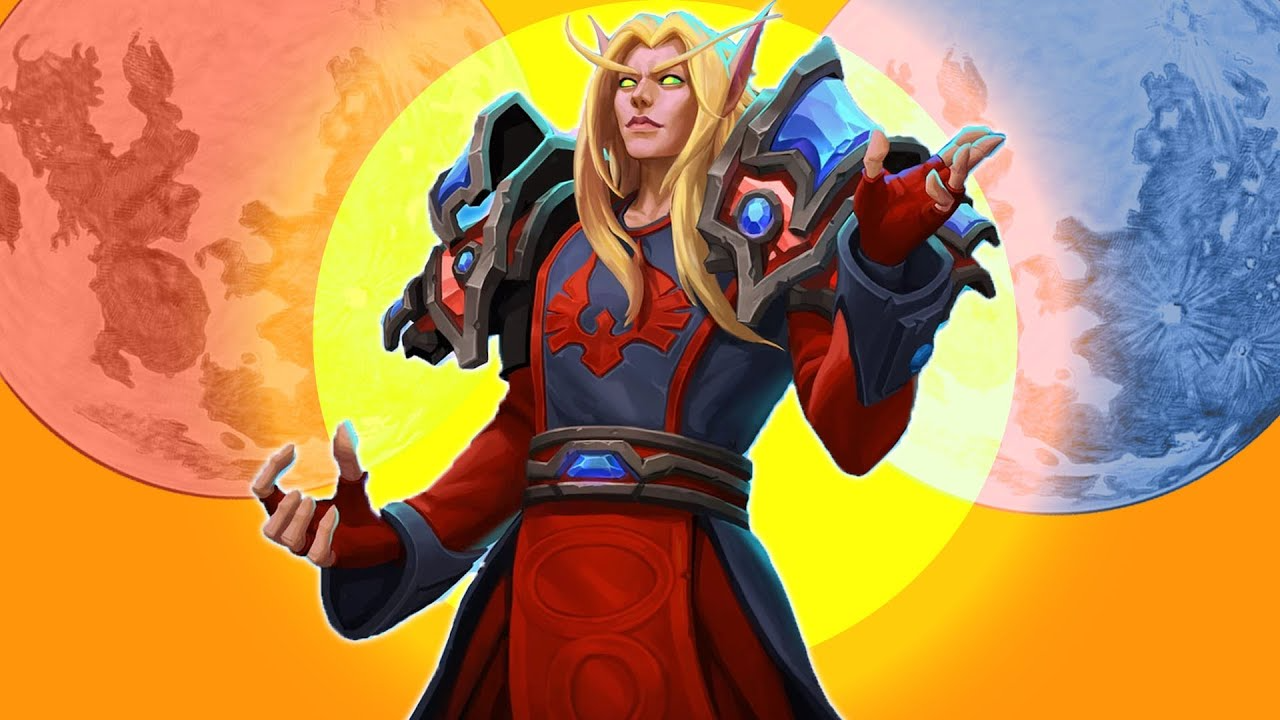
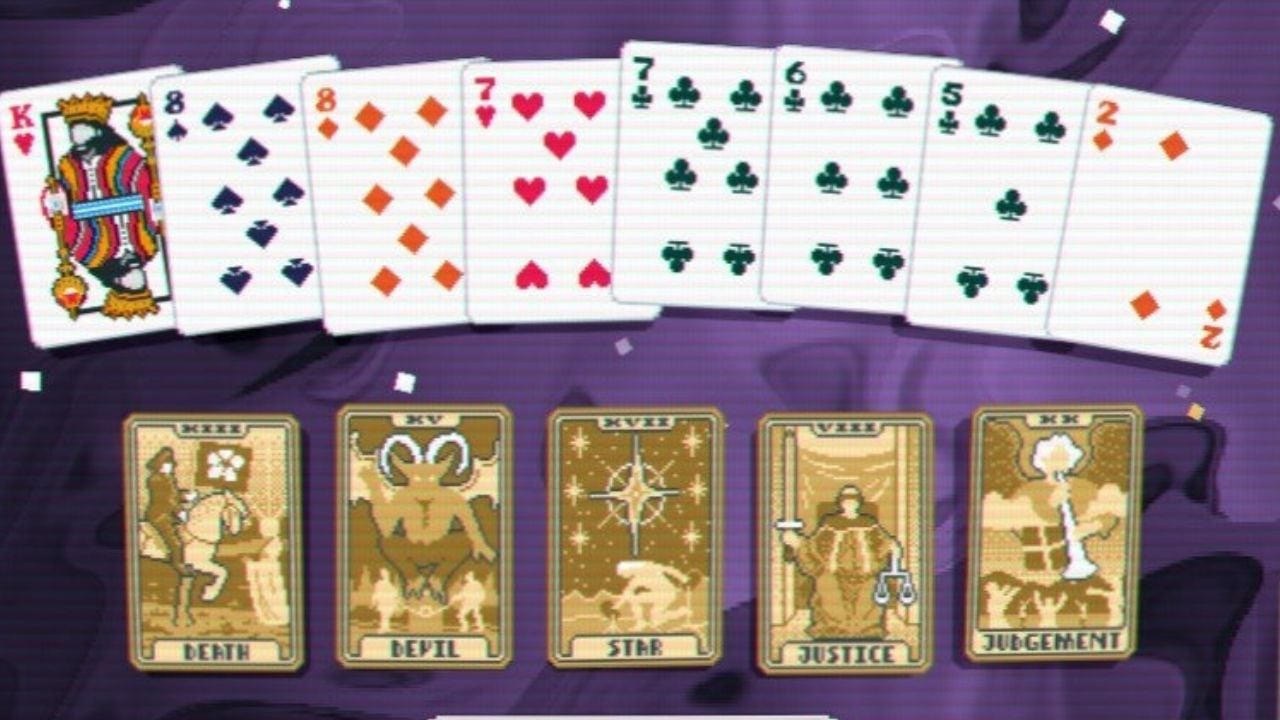
Published: Dec 8, 2015 11:00 am